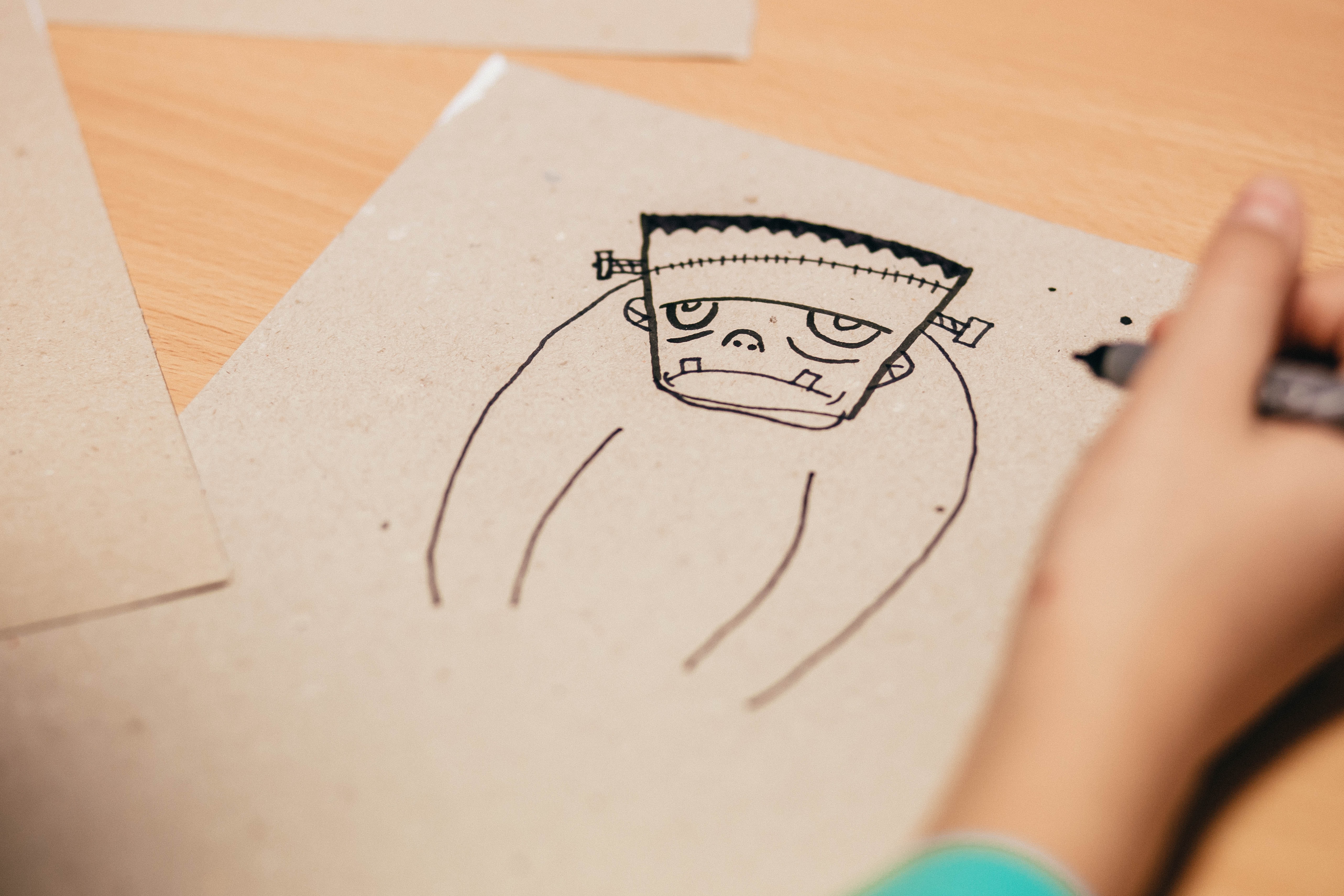Dr. Frankenstein created his monster by stitching together disconnected parts. He hoped the world would marvel at his creation, but overlooked some important things about human nature along the way. Many of us designing, building, and using complex software have witnessed a similar “it’s alive!” moment in our careers.
A crowd of business and sales leaders gather to watch as product managers, developers, and designers try to put multiple existing products together to form a seamless masterpiece. But, like Dr. Frankenstein, not enough consideration is given to the intricacies of these products/features and the nuances of the people who will use them.
Thus, a monster is born.

Why undergo a product-to-platform transformation?
Before we get into the messy part, let’s talk about common scenarios that drive companies to make the product-to-platform transformation:
Mergers & Acquisitions: Consolidation happens. Unfortunately, two great products coming together does not automatically equal one amazing experience for users. Too often, experiences are stuck onto one another and logos are updated to reflect the dominant brand.
Companies need to go beyond merging screens, fonts, and colors and think more about integrating the product vision, product roadmap, and user experience to work better together. Information architecture is nowhere near deep enough–it barely scratches the surface.
Opportunity to Improve ROI: Platformization can also occur when an organization sees a new revenue opportunity. They may realize that becoming a third-party ecosystem will create more sustainable value for the company—upselling and cross selling opportunities abound! But, an entirely new platform business model requires more than a few band-aid APIs to be successful.
Competition is Forcing Their Hand: Emerging players can often disrupt incumbent, legacy enterprises. Companies with foresight know when it’s time to create a more robust solution. But, with time often comes more complexity, and legacy players need to invest in understanding their myriad of solutions before platformization.
Otherwise, they risk losing sales to upstarts who have a seamless user experience that looks more modern, trustworthy, and valuable (precisely because they are new and haven’t had a chance to degrade yet).
The People Have Spoken (and they aren't happy): The best experiences reflect the needs and feedback of the people who use them. Sometimes that feedback is: “this thing stinks.” It may be time to consider a platform approach if Customer Support is inundated with requests for more/better integrated capabilities within a product or suite of products.
Multi-step, multi-product workflows nearly always require expert knowledge of many products to accomplish. Upholding product walls can become a huge barrier to adoption for new users.A recent study featured in Harvard Business Review found that the average Fortune 500 employee toggled between apps nearly 1,200 times a day. It may be time to think about a platform approach if your users are fed up with paying a “toggle tax.”
The scary truth of product-to-platform transformations
The reality is that platform transformations can end up far worse than even the iconic monster we all know. At least Frankenstein was ontologically sound--people understood where he talked from, how he walked, and that he was supposed to be a man.
Some business platforms are integrated with little regard for how things relate to one another. This makes it hard for people to figure out how they work (or what they're supposed to be). Imagine the bizarre, hacked toys from the movie Toy Story – is it a baby doll? An erector set? A spider? There’s a reason they freak us out: we don’t even know what they’re supposed to be!

Unless thoughtfully managed, product-to-platform transformations are likely to be a strategic, financial, and morale sinkhole. Organizations that haphazardly undergo this transition not only lose money by way of failed acquisitions, but also in staff hours and sales.
Telltale signs your platform masterpiece is really a monster
A product-to-platform transformation is a lofty undertaking for any organization regardless of the impetus. With multiple stakeholders, products, features, and teams coming together, it’s easy for this strategic decision to quickly become a tangled mess.
But, people continue to trod on because the business confuses outputs for outcomes. And when that happens, the product team gets stuck in incrementalism. They create bandaid solutions that only treat the symptoms of the real issue.
Your platform masterpiece may actually be a monster if:
- Negative feedback continues after a reasonable adjustment period post platformization. It’s normal to experience some negative feedback when implementing changes (often referred to as the “who moved my cheese?” effect–even improvements take getting used to). Continuously analyze persistent negative feedback to determine if users are experiencing aversion to change or something more;
- You’re losing sales to a young startup that has a fraction of the power your solution has, but looks “slick;”
- Friction occurs when two siloed workflows suddenly need to interact (and there is no intuitive way to bring them together);
- Especially if you need to create dedicated support specialists and engineers simply to make features make sense;
- Duplicative efforts are inadvertently taking place with multiple product development teams building the same things;
- A single feature can live in multiple places because there is no clear delineation between one feature set vs. another in the platform;
- High-value features are not performing as expected because users can’t find them; or
- Customers are paying for other solutions that do something you can provide because they don’t understand your product capabilities.
Using design to make sense of it all
So, how can teams avoid an angry mob of villagers? How can they craft something that fulfills the needs of customers and the business’ aspirations to build something meaningful?
Design can create a shared understanding of the situation, challenges, and chart a way forward that everyone can get behind. Here are just a few ways design can help:
Strategic Discovery: Creating a platform is complicated. You need to zoom all the way out with rigorous discovery–talking to users and stakeholders, auditing the product design, and analyzing the competition–to shape the platform strategy. Resist the urge to rush or skip this step. The more time you spend here, the more quickly (and successfully) you will move into delivery.
Mapping & Modeling: The insights derived from discovery should enable a team of UX designers to draw a picture of the current state of your platform. Yes, an actual picture in the form of maps and models. No, it doesn’t need to be pretty (it might even be…a monstrosity). The goal of mapping and modeling is not to start solutioning. The goal is to create alignment, shape product strategy, and establish a shared baseline to explore new possibilities.
Together, your team can begin to iterate and design the future state of the platform. A future in which all of its parts complement one another. Without addressing the ontology (i.e. what is it? what can it do?) and the vision (where is it going?), you’ll be stuck with lipstick on the proverbial pig (or Frankenstein!).
Organization Design: Along with reflecting on your purpose and platform, it is important not to forget your people. Again, discover and draw how your organization currently functions to support your platform. Then, explore new structures and hierarchies to reduce duplicative work, optimize teams, and break down silos. Your hard work will be for not if you don’t organize your people around your reimagined platform.
This not only entails restructuring, but also incentivizing. Reward people for work that advances shared platform goals vs. work to ship features or hit sales figures for "their" part of the monster. The way you “sell” will need to reflect the way you build. Make sure you have a unified monetization, upsell, or cross-sell model for your platform that is reflected in the user experience.
If we can learn one final lesson from Frankenstein's ill-fated monster, remember not to neglect your creation. It may still have a few visible bolts when it enters the world, but you can always learn and improve upon what you’ve designed by implementing continuous discovery and delivery.
The best-intentioned product-to-platform transformations are driven by a desire for the whole to be greater than the sum of its parts. If the platform approach is not making the individual parts more valuable, it might be time to go back to the laboratory.
Not sure how to go from mess to meaning? Reach out if your team is struggling to realize the full potential of your product or platform: info@designmap.com.


